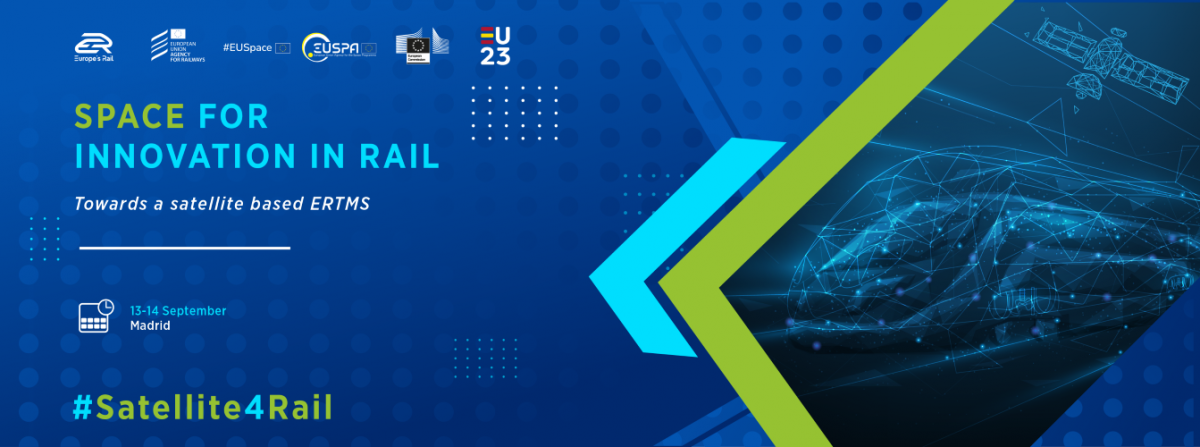Making European Railways fail-safe with the help from #EUSpace

To unleash its full potential for decarbonising European transport, the rail sector must operate more efficiently and integrate the latest technologies to advance the digitalisation of the rail system, thereby providing high-quality customer services. ERTMS provides the European Union with a unique opportunity to create a safer, more resilient and interoperable railway network.
Among others, ERTMS aims to make rail transport more competitive by replacing Europe’s different national train control and command systems with a single, coordinated and highly digital solution. To do this, ERTMS aims to rely on data and services from the European Space Programme, namely, the European satellite navigation systems.
Further, according to EUSPA, more than 150,000 freight wagons in Europe are equipped with Galileo/EGNOS receivers to provide more accurate information about the wagon position. Precise location is used for asset and fleet management purposes, becoming a crucial element for efficient supply chain operations and services to customers.
Not only does Galileo provide precise positioning and localisation, but when augmented by EGNOS and other data sources, it has the potential to replace the expensive physical balises used to monitor train speed and streamline rail operations.
Read this: EU Parliament calls for fast adoption of satellite-based train localization in railway signalling
Galileo and EGNOS potential become even greater when its positioning is complemented by Earth Observation. For example, railway operators can use the Copernicus Land Monitoring Services and Sentinel-1 data in particular to measure displacements, including landslides and ground subsidence to prevent rail damage or other risks that could endanger the safe operation of trains.
A unique rail event with many opportunities

EUSPA, ERA , EU-Rail and the European Commission are joining forces and invite you to the second edition ‘Space for Innovation in Rail – Towards Satellite Based ERTMS’.
The two-day event will gather Europe’s major transport stakeholders, including key decision makers and railway sector representatives across the entire value chain to debate the introduction of the European Union’s Space Programme assets in the rail sector. The main focus of the event will be on the utilisation of the European Global Navigation Satellite Systems (GNSS) for fail-safe train localisation within the European Rail Traffic Management System (ERTMS) evolution.
On the 14th of September, after the official conference programme, the participants will have an opportunity to take part in four unique site visits. Space is limited and will be assigned on a first come, first served basis, so make sure to express your interest in the registration form available below.
"I believe this event will be the best opportunity to reflect on how the EU Space Programme can support railway sector to become digital, taking advantage of the EU Space assets and services to further improve its operational efficiency and reduce the cost of the signalling infrastructure" says EUSPA Executive Director, Rodrigo da Costa.
You can register here and download the full programme here.
The event is organised under the auspices of the Spanish Presidency of the Council of the European Union.
Media note: This feature can be republished without charge provided the European Union Agency for the Space Programme (EUSPA) is acknowledged as the source at the top or the bottom of the story. You must request permission before you use any of the photographs on the site. If you republish, we would be grateful if you could link back to the EUSPA website (http://www.euspa.europa.eu).